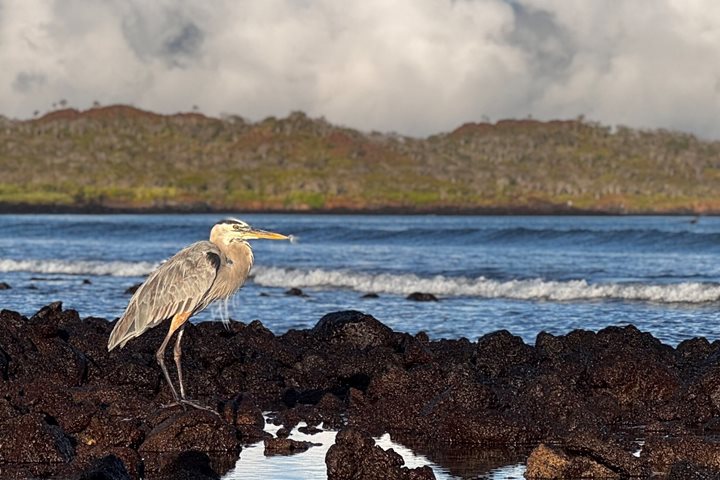The westernmost islands of this archipelago, the place where the expedition brought us today, are the youngest islands of them all. The scenery of the shield shaped volcanoes made it easy for our guest to understand what geological time means and how erosion shapes the landscapes of the planet. This area of the archipelago is bathed by the cold undercurrent of Crown well that is very rich in nutrients and responsible for the marine wild life found in the Galapagos and also for the green color of the water that are known as the upwellings.
Back on board we got ready to see again the same creatures but this time underwater, the snorkeling was just amazing, having the opportunity to swim with the sea turtles and the tropical fish of the area made the experience the best snorkel so far during this week on board the National Geographic Endeavour II.
Punta Espinoza an island that takes us back to very beginning of time… being the youngest of group, with only two hundred and fifty thousand years of age, it’s considered a new born baby. As we talked about the very early processes of life taking place, the formation of soil, the simplicity of the ecosystem together with its fragility made us realize that this places need to be conserved and protected so the life cycles of the species that inhabit this island would not be altered and can continue with its evolutionary processes.
In the afternoon, Punta Vicente Roca along the coastline of Isabela Island, the very unique Galapagos Penguins, within the smallest of the globe, flightless cormorants, marine iguanas, Pacific green sea turtles made our Zodiac ride very enjoyable.
As we crossed the equatorial line, at sunset time we realize that the overwhelming power of nature that surrounds us along the week is making us feel part of this precious planet that well deserves to be conserved.







